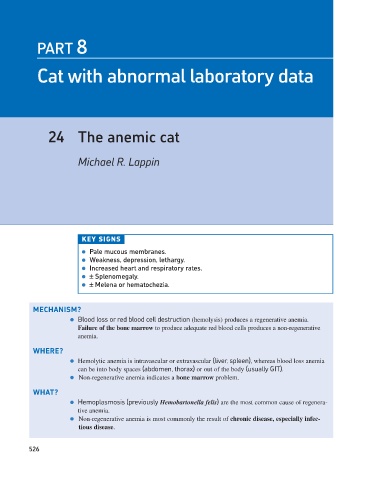Page 534 - Problem-Based Feline Medicine
P. 534
PART 8
Cat with abnormal laboratory data
24 The anemic cat
Michael R. Lappin
KEY SIGNS
● Pale mucous membranes.
● Weakness, depression, lethargy.
● Increased heart and respiratory rates.
● ± Splenomegaly.
● ± Melena or hematochezia.
MECHANISM?
● Blood loss or red blood cell destruction (hemolysis) produces a regenerative anemia.
Failure of the bone marrow to produce adequate red blood cells produces a non-regenerative
anemia.
WHERE?
● Hemolytic anemia is intravascular or extravascular (liver, spleen), whereas blood loss anemia
can be into body spaces (abdomen, thorax) or out of the body (usually GIT).
● Non-regenerative anemia indicates a bone marrow problem.
WHAT?
● Hemoplasmosis (previously Hemobartonella felis) are the most common cause of regenera-
tive anemia.
● Non-regenerative anemia is most commonly the result of chronic disease, especially infec-
tious disease.
526

